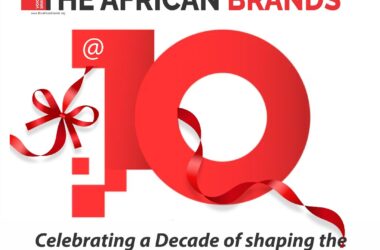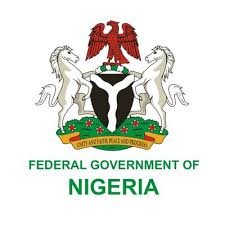The top 100 most valuable B2B brands are collectively worth a quarter of a trillion US dollars (£198bn) more in 2024 compared to last year, according to new figures from Brand Finance. This represents a 10% increase versus this time in 2023.
The data comes as more B2B brands invest in brand-building work, after a traditional overreliance on performance advertising. In their Marketing Week column last month, Peter Weinberg and Jon Lombardo, formerly of the LinkedIn B2B Institute, suggested B2B brands are finally waking up to the importance of brand.
It’s something they describe as ‘the Flippening’, “the magical moment when B2B businesses realise that brand marketing creates much more financial value than so-called ‘performance marketing’”.
With the collective value of the world’s biggest B2B brands having grown rapidly in the last year, it appears that B2B businesses are reaping the rewards of investing in brand-building.
Brand Finance uses the ‘royalty relief’ method to calculate its ranking of brand value. The method determines the value a company would be willing to pay to license its brand if it did not own it. This involves estimating the future revenue attributable to a brand and calculating a royalty rate that would be charged for the use of the brand.
Most brands are not licensed, making this scenario purely hypothetical. Therefore, to work out the brand value of those on the list, Brand Finance looks at brand health measures to determine brand strength and uses sector-specific data to determine the royalty rate range there, as well as looking at parent company data to work out the revenue attributable to each brand. It uses all these factors to arrive at the values on its list.
According to Brand Finance’s method, Microsoft is once again the most valuable B2B brand, worth $220.42bn (£173.68bn). This represents a brand value increase of 60% versus 2023.
Microsoft’s position this year was bolstered by an expanding customer base, Brand Finance says. It also notes that rebranding its Office365 suite to Microsoft365 places further emphasis on the Microsoft brand.
The company’s investment in AI and its association with OpenAI has also helped increase its brand value this year. B2B brands with strong reputations in AI have been able to capitalise on that in the past year as generative AI garners more attention.
Most valuable brand you’ve never heard of Chinese public utility brand State Grid is the world’s second most valuable B2B brand, according to Brand Finance.
With a brand value of $71.15bn (£56.46bn) it knocks last year’s second place brand Amazon into third. Brand Finance terms State Grid “the most valuable brand you’ve never heard of” and says its value is primarily down to “robust” projections of future revenue for the brand.
Amazon, alongside petrol and natural gas business Aramco, was one of just two B2B brands in the top 10 that saw its value decline year over year.
Amazon saw its value decline 2% to $69.4bn (£54.8bn). The business’s Amazon Web Services (AWS) division, which is a large component of its B2B offering, saw increased competition in the cloud computing sector from the likes of Microsoft, Google, and Oracle.
Oracle is now the fourth most valuable B2B brand globally, moving up from seventh place and increasing its brand value by 34% to $53.1bn (£41.93bn). It’s the eighth fastest-growing brand.
Number five in the ranking is UnitedHealthcare, which also saw significant growth of 28% to $47.63bn (£37.61bn).
Shell comes in sixth with a brand value of $45.3bn (£35.6bn) while computing brand Nvidia is this year’s fastest-growing B2B brand, with its brand value up by 165% to $44.5bn (£35.14bn). It ranks seventh overall out of all B2B brands. Like Microsoft, Nvidia’s prowess in AI has given it a boost this year.
UBS was another brand that saw very rapid growth over the past year. The bank saw its value rise by 122%, making it the second fastest-growing B2B brand globally this year.
It acquired Credit Suisse last year, which bolstered its brand value. Its rapid increase also represents its “burgeoning dominance” in the financial services sector, Brand Finance says.
While B2C brands have always been expected to present a personable and relatable front, traditionally, B2B brands have remained more distant.
However, B2B brands are now facing “a really interesting time of transition”, Rosie Guest, marketing director at Apex Group said.
“There’s been a big push to humanise B2B brands,” she said.
As well as a push to humanise, B2B businesses’ performance against sustainability credentials is also playing a big role in brand value for these companies.
In Brand Finance’s research, it runs drivers analysis to determine the role of sustainability in customer consideration across sectors. It finds pronounced roles for sustainability as a driver of choice in B2B sectors like IT services (14.1%), oil and gas and logistics (8.6% each), and chemicals, energy, and mining (8.3%).
Brand Finance estimates how much B2B brands on its list could stand to lose through sustainability perceptions. Amazon tops the B2B sustainability perceptions value, with $22.81bn (£18.01bn) worth of value. Meanwhile, Amazon’s is $20.68bn (£16.33bn). The second most valuable B2B brand State Grid has a value of $7.75bn (£6.12bn) apportioned to its sustainability perceptions.
Speaking on this development last month Leeya Hendricks, CMO at SaaS business Rimm Sustainability said more B2B brands should be tapping into sustainability.
“Customers are increasingly drawn to brands that can make a difference,” she said. “You can stand out and use that as a competitive advantage.”
Culled from Marketing Week









